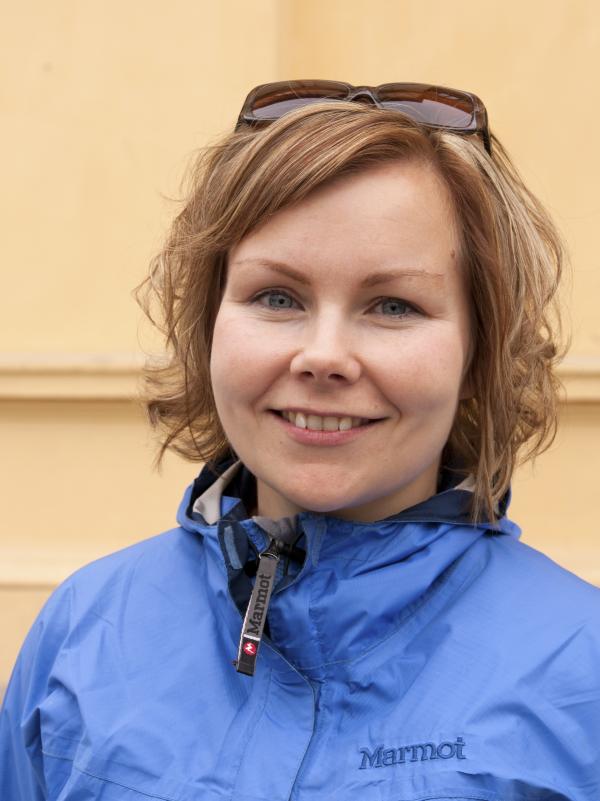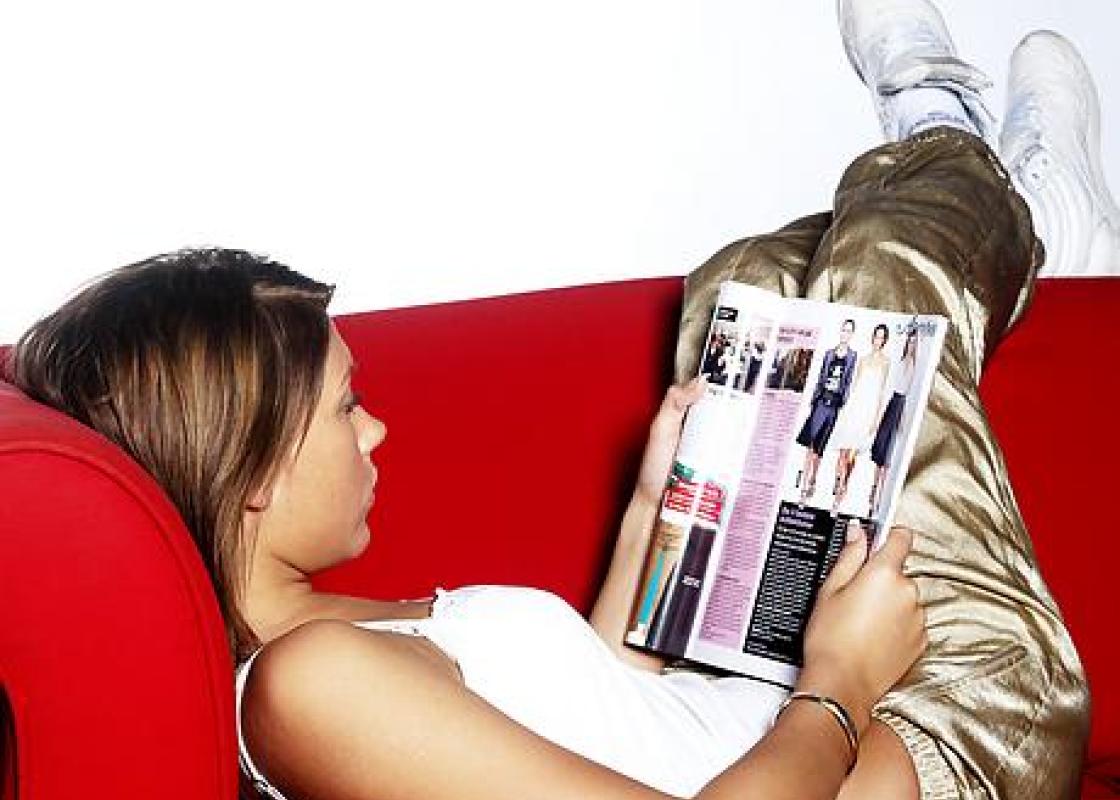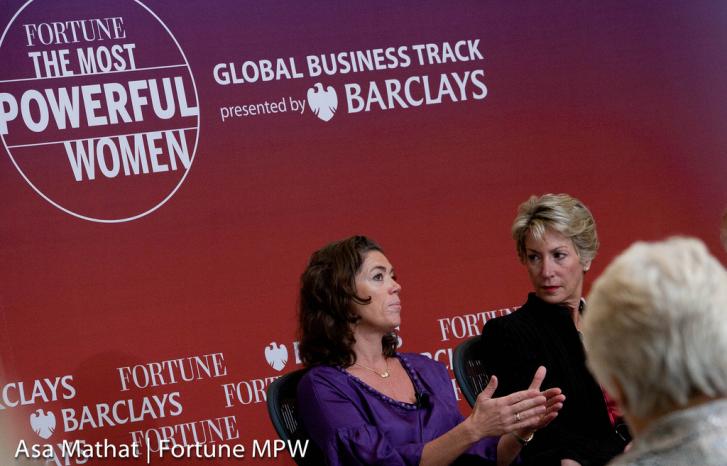Amanda: I would say that the ideal in these magazines is to be smart and streetwise, not a dumb blonde. You mustn’t complain, a woman shouldn’t complain, a woman should handle things by herself! The ideal is to be noticed and respected. It’s not cool to whine. And you shouldn’t be so concerned about trying to achieve the female ideal; that is also a kind of ideal. You mustn’t be stressed out; you’re supposed to be cool.
Ida: You should be yourself, but being yourself means that you should be sure of yourself.
“I asked the girls what they thought about the female ideal presented in the magazines, and they used words like self-confident, streetwise, and someone who stays on top of things. You should be cool and relaxed,” says Sanna Sarromaa.
Sarromaa recently defended her doctoral thesis entitled Det Nye og den unge norske kvinnen – diskurser, representasjoner og resepsjoner om ung kvinnelighet 1957–77 og i 2009 (“Det Nye Magazine and the Young Norwegian Woman – Discourses, Representations and Interpretations of Young Femaleness in 1957-1977 and in 2009”). In her study, she conducted small group interviews of 18 young women, age 13-17, about the magazines they read.
“These girls describe a rather positive female ideal, don’t you think?”
”Yes, but all of them pointed out that the ideal young woman was also pretty and well-dressed. In other words, it’s a combination of inner and outer features. Several of the girls mentioned that the magazines have an impact on us as readers. The reader is told that she needs to exercise more, eat healthier food, buy the right clothes and the like. This promotes a culture that emphasizes appearance.”
“How does this female ideal coincide with the girls’ self image?”
“None of them will say that they are the ideal young woman, but they strive to become her – this is the way a girl should be and how they want to be.”
Maria: When I’m an adult, I’m going to be myself. I’m going to work and have a husband and children. I’ll have friends and a normal life. I don’t need to be very rich, but I’ll be smart and somewhat relaxed.
Mina: I’ll have faith in myself. I’ll manage things on my own.
Oline: I’ll be self-confident, but not too self-confident. Relaxed, sort of. I’ll be respected for the person I am. I’ll have a lot of friends and a good social life – both at home and out on the town.
With and against the flow
“Young women go both with and against the flow when they read magazines,” says Sanna Sarromaa.

“The girls are very reflective. They are able to take an ironic, and self-ironic, attitude towards these magazines. Even though they use the magazines as an escape from reality, the girls have a conscious attitude towards what they’re reading,” the researcher points out.
Research on magazines has traditionally consisted of purely textual analyses, and the conclusions about the female ideals presented in the magazines are often negative.
“If I had conducted a strict content analysis, I would probably have been scared. But after all, this is just one of many sources that influence young women. In addition, schools today teach them a lot about how to interpret the media so that they can more easily take a critical view of the content,” Sarromaa believes.
Despite this, she will not let the magazines off the hook for the content they publish.
“As a feminist, I would say that the girls deserve a higher quality of writing. It’s possible to write about fashion, make-up and sex in a way that is more challenging to the reader, such as by using irony. The magazines in my home country of Finland are much better at that.”
Magazines contain important history
Sanna Sarromaa has a master’s degree in political history.
“But I was tired of powerful men and wars, and wanted to study something down-to-earth instead. I also wanted to fill a gap in the research-magazines have had low status in media research. The field of gender research has focused mostly on adult women, not teenage girls, and the research on young people has focused more on teenage boys,” she explains.
According to the researcher, the Norwegian magazine Det Nye, which was launched in 1957, has been an important part of history for girls and young women in Norway. It has dominated the market for this age group for 40 years. Today the magazine has competition from magazines such as Inside, Mag, Ellegirl, Cosmogirl and Seventeen, but according to statistics from 2007 Det Nye is the market leader.
“As a result, the magazine has had an enormous impact on young women. Det Nye provides an amazing glimpse into girls’ history, while at the same time the magazine itself is part of this history.”
Change in the female ideal
Sarromaa has not only interviewed girls who are young today. Her thesis also contains interviews with women who were young in the 1950s and 1960s, and she has conducted a content analysis of two regular columns in Det Nye from 1957, 1968 and 1977.
“Can you compare the way girls today read magazines with the way the older women did?”
“No, that would be impossible, methodologically speaking. But I can say that the content is totally different, and the female ideal presented in the magazine is not the same at all. The image of the ideal young woman in 1958 was very narrow,” says Sarromaa, who continues:
“At that time there was only one way to be a young woman, if you go by what is presented in the columns in Det Nye. Today the magazines present many different ways to be accepted as a young woman.”
However, the researcher and her young informants emphasize that the variations fall within certain parameters.
Oline: The ideal young woman in the magazines is the same as ideal young women in general.
Maria: There are many rules.
Oline: You walk a tightrope all the time. A girl has to comply with certain unwritten rules. Otherwise you’ll be excluded – or whatever it’s called.
Mina: Yes, excluded… Girls talk a lot behind each other’s back and nobody likes to be talked about. This is why you need to conform to the rules at all times.
Erle: For example, you can’t dress exactly the way you want. You have to give it some thought.
Maria: And you must be a little self-confident and a little self-ironic and a little relaxed. Kind of a combination.
Translated by Connie Stultz.
Sarromaa, Sanna (2011): Det Nye og den unge norske kvinnen – diskurser, representasjoner og resepsjoner om ung kvinnelighet 1957–77 og i 2009 (“Det Nye Magazine and the Young Norwegian Woman – Discourses, Representations and Interpretations of Young Femaleness in 1957-1977 and in 2009”). Submitted to Karlstad University.
Sanna Sarromaa was employed at Lillehammer University College during her fellowship period. She will now move on to a three-year position as a post-doctoral researcher at the Research Centre for Child and Youth Competence Development at Lillehammer University College. During this period she will conduct research on the connections between gender, social class and ethnicity among teenage girls.


